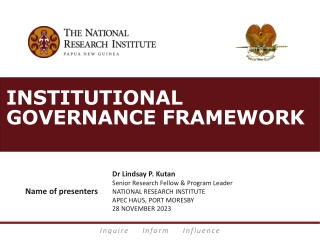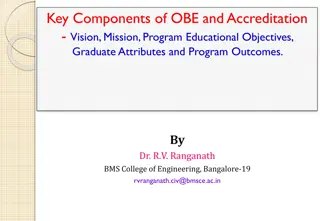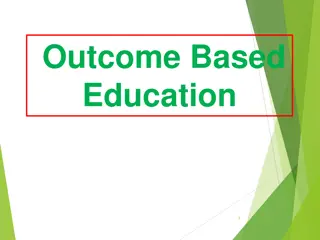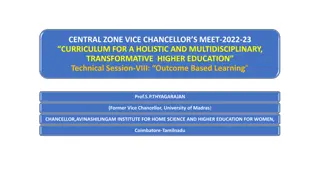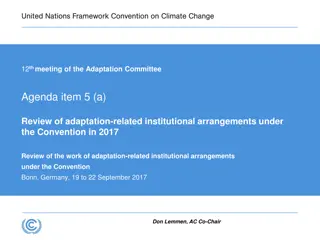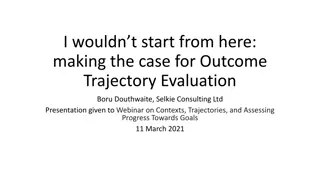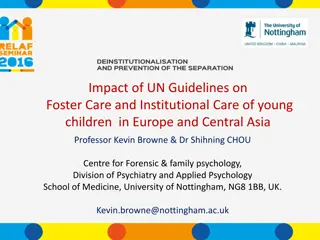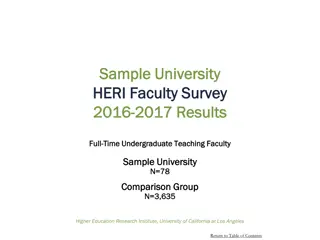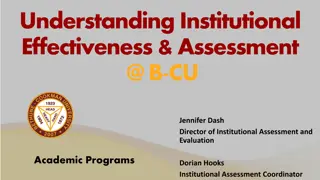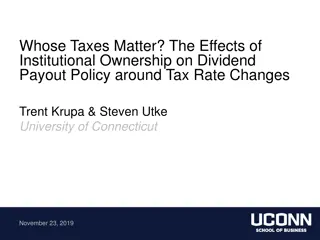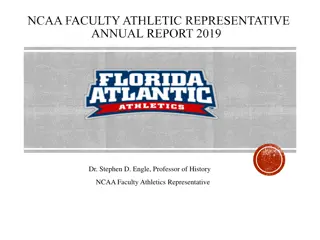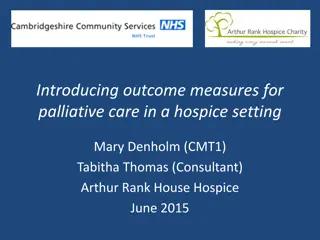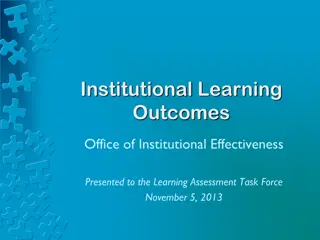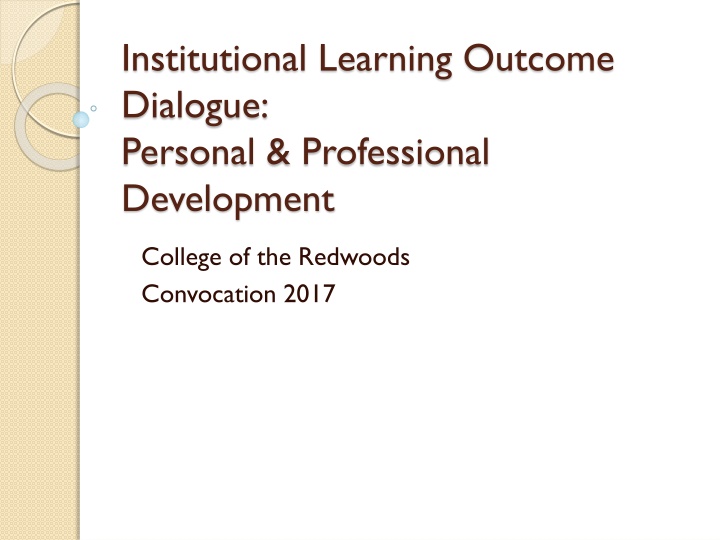
College of the Redwoods Convocation 2017: Personal and Professional Development Insights
Explore the institutional learning outcomes at College of the Redwoods focusing on personal and professional development. Dive into student satisfaction surveys, graduating exit surveys, and important factors influencing educational choices. Gain valuable insights into student goals and outcomes.
Download Presentation

Please find below an Image/Link to download the presentation.
The content on the website is provided AS IS for your information and personal use only. It may not be sold, licensed, or shared on other websites without obtaining consent from the author. If you encounter any issues during the download, it is possible that the publisher has removed the file from their server.
You are allowed to download the files provided on this website for personal or commercial use, subject to the condition that they are used lawfully. All files are the property of their respective owners.
The content on the website is provided AS IS for your information and personal use only. It may not be sold, licensed, or shared on other websites without obtaining consent from the author.
E N D
Presentation Transcript
Institutional Learning Outcome Dialogue: Personal & Professional Development College of the Redwoods Convocation 2017
ILO 2: Personal and Professional Development Students will reach their career, transfer, or personal goals. This outcome indicates if a student's individual goals are being met. This includes the goals of students earning degrees, or of students taking only a few courses for training and/or personal enrichment.
Noel Levitz Student Satisfaction Inventory This school does whatever it can to help me reach my educational goals. Importance satisfaction/SD Gap 2017 administration: 6.46 5.41/1.57 1.05 2013 administration: 6.37 4.97/1.74 1.40 2010 administration: 6.41 5.31/1.84 1.10 scale of 1 = no importance/lowest satisfaction, 7 = very important/very satisfied
Graduating Exit Survey 64 student completed the new online graduating exit survey in 2016-2017
Graduating Exit Survey Do you plan to transfer to another institution?
Graduating Exit Survey How important was each of the following in terms of your reason for choosing CR? Weighted Average Low cost: CR is affordable 4.89 Quality: CR has good faculty and instruction Availability of major: CR offers the educational programs I needed/wanted Location: CR has a good/convenient location Reputation: CR has a good reputation 4.8 4.5 4.3 4.15
Graduating Exit Survey What was your main educational objective at CR?
Graduating Exit Survey Were you successful at completing your main educational objective?
Graduating Exit Survey Did you have a Student Education Plan (SEP)?
To what extent do you agree CR prepared you in the following skill areas? Weighted Average Skills specifically related to your degree or certificate Critical thinking & problem solving Research & evaluating data Verbal communication Written communication Awareness of a diverse global 4.55 4.53 4.42 4.35 4.2 4.2 community Scientific reasoning Ethical decision making 4.05 4 Reading Math 3.95 3.95 3.9 Computing & technology Professionalism (punctuality, time management, etc.) Being safety minded in the workplace 3.8 3.8
Ed Plans cont. Comprehensive SEPs reported 361 610 218 517 488 135 223 272 Semester 2014 Fall 2015 Spring 2015 Summer 2015 Fall 2016 Spring 2016 Summer 2016 Fall 2017 Spring
Transfers CSUs ~ Dropped from 220 in 2012-13 to 180 in 2015-16 147 went to HSU in 2015-16 7 students went to UCs in fall 2015
Transfers Fall 2016 most popular HSU majors Business 17 Psychology 14 Biology 14 Environmental Studies/Engineering Social Work 12 14
Associate Degrees for Transfer Anthropology 4 Communication - 4 Business Administration - 12 Early Childhood Education - 4 English - 2 History 4 Kinesiology - 1 Mathematics 3 Political Science - 1 Psychology 17 Physics - 2 Studio Arts 3 Sociology - 7
Student Equity Outcomes In 2012-13, equity gaps were discovered for access, course success rates, and basic skill success and progression that are not present in the 2015-16 data. Equity gaps remain for persistence, completions, and transfers in 2015-16. African Americans again show very low completion rates. Hispanics were disproportionately impacted in 12-13 but not in 15-16.
Student Equity Outcomes Degree/Cert Seeking Cohort Completers 2347 2067 Completion Gender Female Male Age < 25 25-34 35-49 50 and above Ethnicity American Indian Asian African American Hawaiian/Pacific Islander Hispanic Two or More Races Unknown White rate Ratio 0.24 1.32 0.18 1.00 560 375 2661 1112 465 176 489 288 127 31 0.18 1.00 0.26 1.41 0.27 1.49 0.18 0.96 332 121 103 44 666 291 272 2585 75 29 8 7 121 59 63 573 0.23 1.02 0.24 1.08 0.08 0.35 0.16 0.72 0.18 0.82 0.20 0.91 0.23 1.04 0.22 1.00
CTE Outcomes Survey Skills-building students were surveyed if they met one of the following criteria in 2013-2014, and did not enroll in 2014- 2015: earned a certificate of 6 or more units, earned a vocational degree, or earned 9+ CTE units The survey was administered in early 2016 by e-mail, telephone and US mail.
CTE Outcome Survey 266 students responded of 529 Why did you stop taking classes at CR? My goals were met (123) I completed the program (114) I got a job (80) Relocation (54)
CTE Outcome Survey Primary reason for attending Earn a certificate or degree AND transfer Earn a certificate or degree NOT to transfer Earn transfer units with or w/o getting a Degree Take classes to update job skills (license/permit) Take classes for self-enrichment only 27.4% 33.5% 8.3% 16.2% 10.5% Other 4.1% 0% 5% 10%15%20%25%30%35%40%
CTE Outcome Survey 49.6% were very satisfied with the education and training they received at CR, and 33.8% were satisfied for an overall satisfaction rate of 83.5%. 23.3% of respondents indicated they had transferred to another College or University.
Current Employment Status Self-Employed 11.7% Employed at one job 54.9% Employed at more than one job 10.2% Working not for pay, not seeking paid employment Working not for pay, seeking paid employment 1.1% 0.8% Unemployed, seeking employment 10.5% Unemployed, not seeking employment 8.7% 0% 20% 40% 60%
If currently employed: 55.1% indicated they are working in the same field as their studies and training, followed by 20.6% indicating they work in a field that is close to their studies and training, 24.3% indicated their job is not related to their studies.
Employment Of those respondents who engaged in a job search after finishing their studies 84.0% reported finding a job and 16.0% were still looking. Of those with a successful job search, 86.7% found a job within six months (65.7% within three months).
Work status before and after CR 60% 50.0% 50% 40.2% 40% 30% 22.9% 18.1% 20% 9.4% 8.7% 10% 0% Full time (40 or more hours per week) Part time (20 to 39 hours per week) Before Part time (less than 20 hours per week) After
Work status before and after CR The hourly wage of all respondents increased 35.0% from their hourly wage before their studies $30 Before After $20.26 $20 $15.01 $10 $0 Hourly Earnings
CTE Outcome Survey Respondents, including those who had transferred, were asked what impact their coursework had on their employment. No impact on my employment (72) Enabled me to learn skills that allowed me to get a job at a new organization (58) Prepared me for a possible new job (54) Enabled me to learn skills that allowed me to get a promotion at my same organization (24) Enabled me to learn skills that allowed me to stay in my current job (19) Enabled me to start my own business (11)

